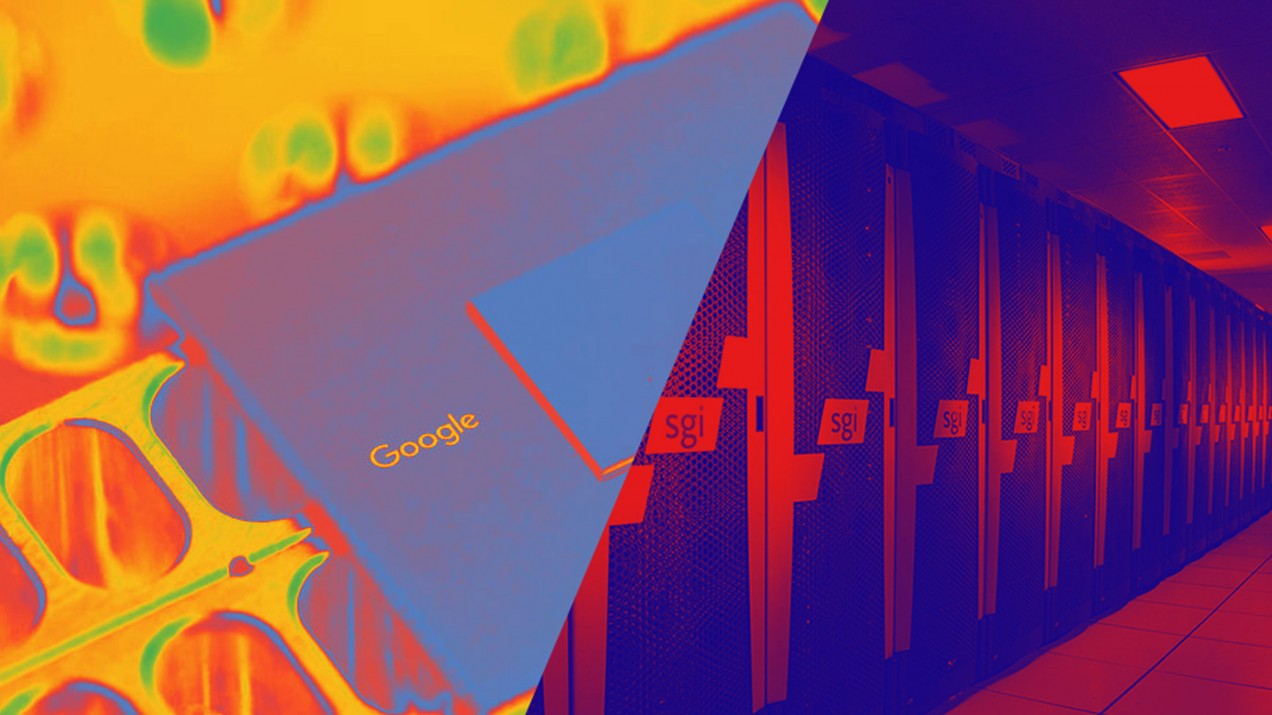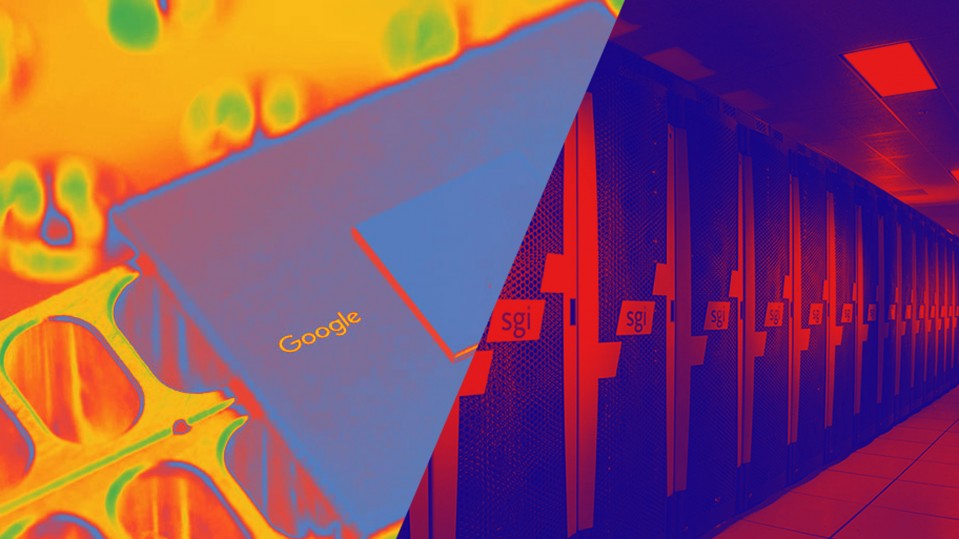

Computing
Google has enlisted NASA to help it prove quantum supremacy within months
The firm will pit its Bristlecone quantum processor against a classical supercomputer early next year and see which comes out on top.

Google wants NASA to help it prove quantum supremacy within a matter of months, according to a Space Act Agreement obtained by MIT Technology Review.
Quantum supremacy is the idea, so far undemonstrated, that a sufficiently powerful quantum computer will be able to complete certain mathematical calculations that classical supercomputers cannot. Proving it would be a big deal because it could kick-start a market for devices that might one day crack previously unbreakable codes, boost AI, improve weather forecasts, or model molecular interactions and financial systems in exquisite detail.
The agreement, signed in July, calls on NASA to “analyze results from quantum circuits run on Google quantum processors, and ... provide comparisons with classical simulation to both support Google in validating its hardware and establish a baseline for quantum supremacy.”
Google confirmed to MIT Technology Review that the agreement covered its latest 72-qubit quantum chip, called Bristlecone. Where classical computers store information in binary bits that definitely represent either 1 or 0, quantum computers use qubits that exist in an undefined state between 1 and 0. For some problems, using qubits should quickly provide solutions that could take classical computers much longer to compute.
Physicist John Martinis, who leads Google’s quantum computing effort, thinks that Bristlecone is capable of achieving quantum supremacy. Not everyone agrees. In May, researchers with Alibaba’s Data Infrastructure and Search Technology Division published a paper suggesting that classical computers running simulations could match its performance, and that quantum chips with lower error rates might be needed.
Daniel Lidar, director of the Center for Quantum Information Science and Technology at the University of Southern California, also has doubts. “It would seem that some additional form of error suppression would be necessary,” he told MIT Technology Review. “In addition, classical simulation methods have raised the bar several times over the past couple of years, and it is quite likely this trend will continue. Nevertheless, I would not rule out a quantum supremacy demonstration using [Google’s] Bristlecone system.”
Google’s previously unreported partnership with NASA is an explicit effort to “[demonstrate the] processor’s viability and potential.” Although Google will not pay NASA anything for the tests, the agency has put a $680,000 price tag on its own work for the project.
The new collaboration will work like this. Because Bristlecone requires superconducting circuits maintained at a temperature close to absolute zero, it cannot be moved from Google’s labs. Instead, researchers from the Quantum Artificial Intelligence Laboratory (QuAIL) at NASA’s Ames Research Center in Silicon Valley will connect to Bristlecone online, via Google’s Cloud API service. Google will also share current software that allows classical computers to simulate quantum circuits, so that NASA can develop and improve upon it.
Together, the two organizations will work out how to map “a diverse array of optimization and sampling problems” to Bristlecone’s gate-model quantum computing system. Early next year, when they have agreed on the problems and initial targets for simulation, NASA will code the software necessary to run those simulations on its petaflop-scale Pleiades supercomputer, also located at Ames. Pleiades is NASA’s most powerful supercomputer, currently ranked in the top 25 worldwide.
Around July of next year, 12 months from the contract’s signing, NASA will “compare results from classical simulation of quantum circuits to results from Google hardware.”
If things do not go as planned, Google’s agreement has a five-year term within which “NASA will provide further mappings, improved circuit simulation techniques, more efficient compilations [and] results from circuit simulations.” Google will give QuAIL access to its quantum processor and software until at least 2023.
NASA could not immediately respond to requests for comment.
This is not Google’s first foray into quantum computing with NASA. In 2013, they worked together to install at Ames a quantum annealer made by the quantum computing company D-Wave. That machine was subsequently upgraded in 2017.
Ultimately, Google wants its quantum computing software for simulation, optimization, and machine learning to be shared more widely. “It is Google’s intent that it will release its Software Development Kit (SDK) for using the quantum processors in an open source manner,” the agreement states.
This is likely referring to Cirq, open-source software for creating quantum circuits that Google announced this summer. Google said then that it planned to make Bristlecone available in the cloud, with Cirq as its interface. D-Wave, IBM, and Rigetti already have quantum cloud services available to researchers.